Last Updated on 3 years by On Trends Gear
The process of Audio connection in setting up a home theatre depends on the devices you’re connecting. But most come pre-wired or include instructions on how to do it yourself.
In most cases, it’s a matter of connecting appropriately labelled terminals together.
When it comes to home theatre wiring, the most important thing to know is the scope of your project.
Hire an expert if your development includes ceiling speakers and another glitzy tech that necessitates structural changes.
It is possible to do the job independently if you want to build a more modest home theatre and are confident in your ability. Just keep in mind that it may take longer than you expect.
The next step is to familiarize yourself with the different types of wires and connections you’ll be making in your home theatre.
Table of Contents
Audio Connection: What are the Different Types of Audio Ports?
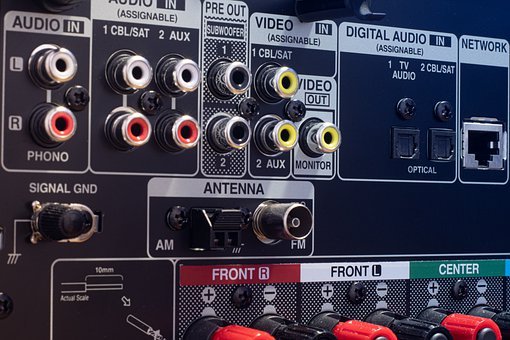
Just as there are many audio connection equipment and devices on the market, there are several kinds of audio connectors to choose from.
Be cautious when utilizing a gadget that cannot communicate with either your receiver or your audio equipment.
So, to save you money, we’ve compiled a list of the most popular audio ports.
The 3.5 mm Stereo Mini Jack
- Play Audio from any Phones, Tablets, MP3, TV Boxes, DVD, PCs, Laptops, Consoles or...
- No attenuation of sound quality. Maintaining audio level. Passes test and detection...
The 3.5 mm stereo mini-jack is a widespread audio connector type. Because it is often seen in headphones, headsets, and wired earbuds, it is also known as a headphone jack.
Other names for this port include the 3.5 mm connector and the stereo micro jack. The TRS connection configuration is the most common 3.5 mm connector design. Tip, Ring, Sleeve is abbreviated as TRS.
With two contact points for the speaker left and correct output, this is a stereo connection as an alternative or complement to the mini-jack, connections with comparable characteristics such as TS, TRRS, TRRRS, and TRS.
The ¼ -inch/6.3 mm TRS Connector Plug
- Work for for 3.5mm jack equipment,Connect 3.5mm Male to 6.35mm Female(1/8" male to...
- made of pure copper and its service life is much longer than plastic and gold...
For the most part, the TRS plug can be found in musical instruments and other high-end audio equipment such as keyboard and piano instruments, as well as electric guitar amps.
Stereo ¼ -inch TRS plugs are also known as Balanced Jacks or TRS connectors because telephone operators once used them to connect telephone calls.
Standard designs for ¼ -inch connectors have TRS pinouts similar to those found on standard audio interfaces but are more extensive and more comprehensive in diameter.
When it comes to balanced stereo outputs, however, the 6.3-mm plug comes in both TS and TRS versions, the latter of which is more extensive.
RCA
- IN THE BOX: (1) 4 foot 2-Male to 2-Male RCA audio stereo subwoofer cable
- CRYSTAL CLEAR AUDIO: Enhances audio connections; ideal for home-entertainment and...
Most consumer stereo equipment uses phono connectors, which are commonly referred to as RCA connectors.
The RCA connector came from the early 1900s when it became closely associated with the RCA Corporation. RCA connectors are found on some mixers’ tape and CD inputs and outputs.
The colours only make wiring equipment easier; it doesn’t matter which colours you choose or how they are arranged as long as the same colour is connected to the same port on each end.
Using an RCA audio connector to transfer the two-channel analogue composite audio signal to the right and left audio channels.
An RCA plug can be used for stereo and mono audio, although only supports stereo audio output.
XLR
- IN THE BOX: 6-foot XLR male to female microphone cable for XLR-compatible PA systems,...
- CLEAR TRANSMISSION: All-copper conductors with inner copper spiral shielding to...
The circular 3-pin connectors created by Cannon are known as XLR (later bought by ITT).
XLR has become a general industry name, and many manufacturers now provide this form of connector, which has positive, negative, and ground connections.
XLR connections are often used in the audio industry to send balanced mic and line-level signals to mixers or audio to speakers.
Banana Plug
- Can accept bare wire or spades / Can accept 12 to 18 AWG speaker wires
- Color coded black/red rings for maintaining proper polarity
This electrical connection, also known as a banana jack, links audio cables, such as speaker wires, with binding posts on the rear of many power amplifiers or special jacks.
Two banana plugs are moulded together and positioned 3/4 inch apart, precisely the distance between the binding post receptacles on the power amp’s rear.
A metal pin in the shape of a banana is included with each banana. Banana plugs do not affect your system’s audio quality. Banana plugs’ primary benefit is their ability to keep things clean and orderly.
While it may take some time to prepare the plugs, properly connecting to your A/V receiver will just take about ten seconds.
Banana plug use is a personal choice, but I think they’re a terrific investment, reasonably priced, and well worth the effort.
SpeakON Connector
- NEUTRIK BRAND speakON connectors are the industry-standard for loudspeaker...
- JUST RELEASED with New and Improved kink protection by two-component bushing
Neutrix created the SpeakON connections only recently. Inductive loads and high currents are standard in professional audio equipment; thus, this is designed to keep things running smoothly.
It also helps keep things from arcing when connected when under load. Twist-locking the SpeakON plug into a socket keeps it in place.
SpeakON connectors can be found in two, four, or eight-pole iteration designs depending on your needs.
Even though they look different, the 2- and 4-pole designs are interchangeable so that you can plug in either a 2- or a 4-pole device into the same suitable socket.
SpeakON connectors are new, but their advantages over conventional speaker connectors could make them widespread in the future.
What Pair of Connectors can be Used for Audio?
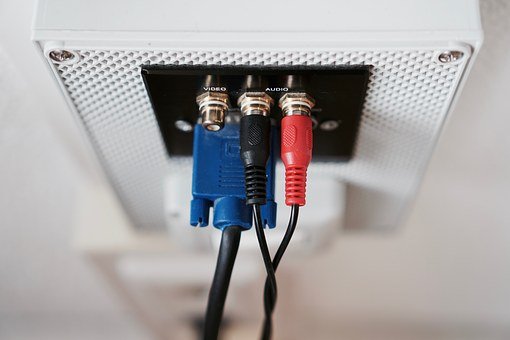
As mentioned earlier, 3.5mm ports are often used on computers and mobile devices for mono or stereo audio.
Speakers, line-in/line-out connections, and microphones all utilize connectors on a computer’s sound card.
The 3.5mm interface is used by portable devices to connect headphones or an amplifier’s auxiliary input to the line-out. Camcorders often utilize the “three-pole” form of the 3.5mm connector.
Video and right/left stereo audio may be carried by this connector, which has a tip and two rings.
Similarities & Difference Between Audio Connectors, Jacks, Plugs, & Adapters
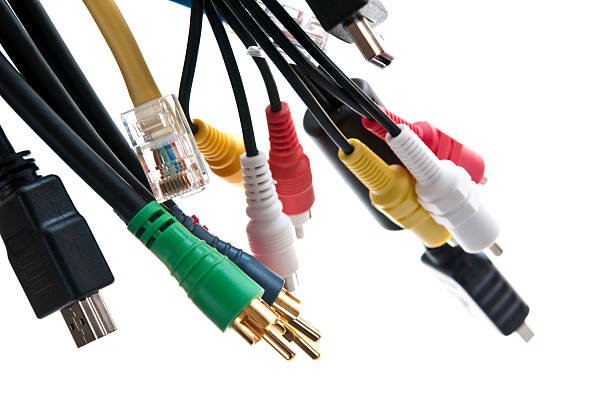
Audio Connectors: Any component used to link one wire, cable, or device to another may be an audio connector.
Male and female audio components are also available, as are input and output options. The connector is the component of the cable at the other end that connects to the jack or port.
Certain connections include locking mechanisms such as flip, blade locking, or screw bolting to prevent accidents and lousy installation.
Jacks: An audio jack is a hole or a port that allows a suitable or compatible connection to the jack to function.
The jack is a fixed part of a gear that does not move much and is often used. Most of the time, the female socket is used. However, this is not always the case.
Plugs: The plug, often referred to as the male connector, is the connection component that attaches to a port or jack.
There is always something connected to the audio socket. The 3.5mm headphone plug is a famous example of an audio connector in use today.
This cable connects earbuds or headphones to the 3.5mm headphone jack used on digital audio players, certain phones, laptops, and personal computers.
Adapters: If you have more than one incompatible device, you will need an adapter to make the conversions you need. An audio adapter connects two disparate audio sources using a single cable.
Audio adapters may do more than only transfer audio signals. They can also physically transform one kind of connection into another.
Audio connection – Ways to Connect & Wire Home Theater Sound System
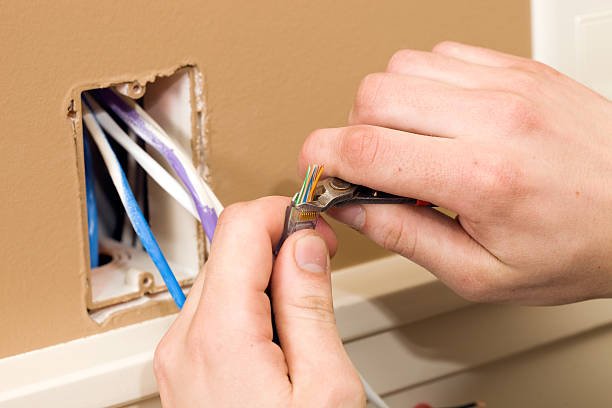
You should know that most home theatre and audio-visual systems have a variety of connection types.
All is well and good at recognizing the various cables and connections, but you still have to choose which one to utilize.
Even though it appears to be a straightforward operation, there are often multiple options for exchanging audio and video among our systems.
And some will outperform the rest in terms of delivering results. To begin, it’s a good idea to know precisely what each category accomplishes.
HDTV, Blu-ray player, and AV receiver all have various ports on the rear.
The first thing you should do is figure out what they’re for. We may categorize the different kinds of connections into three main categories:
- Audio + Video
- Video Only
- Audio Only
You can communicate images and sound between your devices by using certain connections.
Others are solely for the visual or auditory experience. This is vital to keep in mind.
Once you’ve identified your devices’ connections, you can decide whether or not you need separate ones for video and audio.
So How do you Wire your Home Theatre System?
- Connect all of your playback devices’ outputs to the AV receiver’s rear.
- Connect your AV receiver’s output cable to your display device, usually a TV or projector.
- Connect the Speaker wire to your AV receiver.
Depending on your system’s configuration, this step above may look different to you.
Consider connecting your playback devices directly to your TV instead of using an audio/video receiver.
If you want to connect your TV to an external sound system, you can do so by connecting your TV’s audio output to an amplifier or soundbar.
Nothing is off-limits. Using an AV receiver helps streamline the procedure and reduce the number of cables required.
What is an Optical Cable?
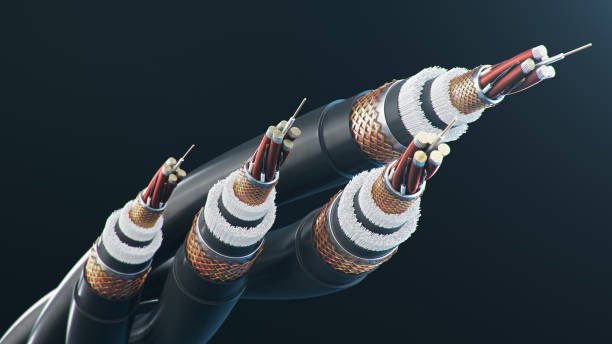
Many electrical signals in the cabling go to your media centres, PCs, and other AV equipment.
The signal is digital or analogue, it is sent over the conductive wire as an electrical impulse.
There are wires, wires, and more wires within every cable, from your 1970s turntable’s speaker wire to your new HD TV’s HDMI connection.
The optical audio cable is unique in the home audio/video industry. The optical audio system transmits digital audio signals between fibre optic cables and laser light instead of existing cabling standards.
Toshiba first created the standard in 1983, and it was designed to work with the company’s early Compact Disc players.
The TOSLINK port may be found on the device’s back; tHDMI Arc or Speaker Cable Which is Betterherefore, check to see whether your gadgets support it.
However, you don’t need a label to know what the port is called: it’s commonly branded “optical audio,” “TOSLINK,” or “Digital Audio Out (Optical).”
The TOSLINK port stands out from the rest of the device’s ports because it resembles a doggy door leading into its guts.
HDMI Arc or Speaker Cable Which is Better
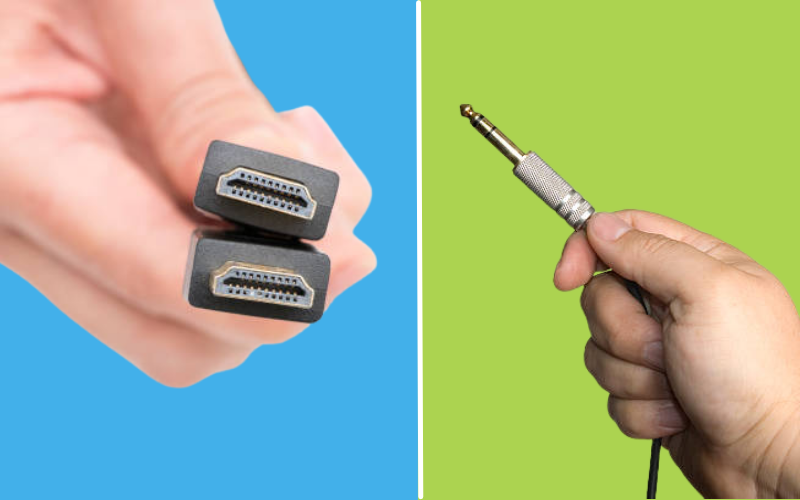
It’s impossible to make your system sound better than it already is. Still, good speaker cables can and should guarantee that every last bit of performance reaches your speakers from your amplifier.
On the other hand, a subpar speaker wire can degrade your system’s sound quality.
So what is an HDMI arc?
Most people use HDMI, which stands for High Definition Multimedia Interface, to send high-definition video and music from a device to their TV or monitor.
You may find it in almost every consumer product, and it’s common in commercial AV as well.
ARC stands for Audio Return Channel. It uses a single high-speed HDMI cable to connect your TV to your sound system, eliminating the need for a separate composite or optical audio cable.
So, which option is the most suitable? Well, for the average consumer using an audiovisual receiver, you’ll have to go with the HDMI ARC option.
It’s important to note that an HDMI ARC connection provides the highest sound quality and supports high-performance audio codecs such as Dolby Atmos, DTS HD Master Audio, and DTS Digital Plus.
You may use the same remote control across various devices or systems with HDMI ARC because it supports CEC technology.
The old compatibility problem still exists, of course. HDMI outputs on many modern TVs are at a premium because of this.
In this situation, the simplest solution is to use a speaker cable since all HDMI ports have already been taken.
The audio quality should satisfy most home systems, even if this is the only option available.
Conclusion
So there you have it; home theatres assist you in creating the ideal atmosphere for your home event through powerful sound effects and high-definition film.
With a home theatre packed with high-quality electronics, you can enjoy your favourite movies to the fullest extent possible, and your family gatherings will be remembered fondly.
Last update on 2024-07-27 / Affiliate links / Images from Amazon Product Advertising API





